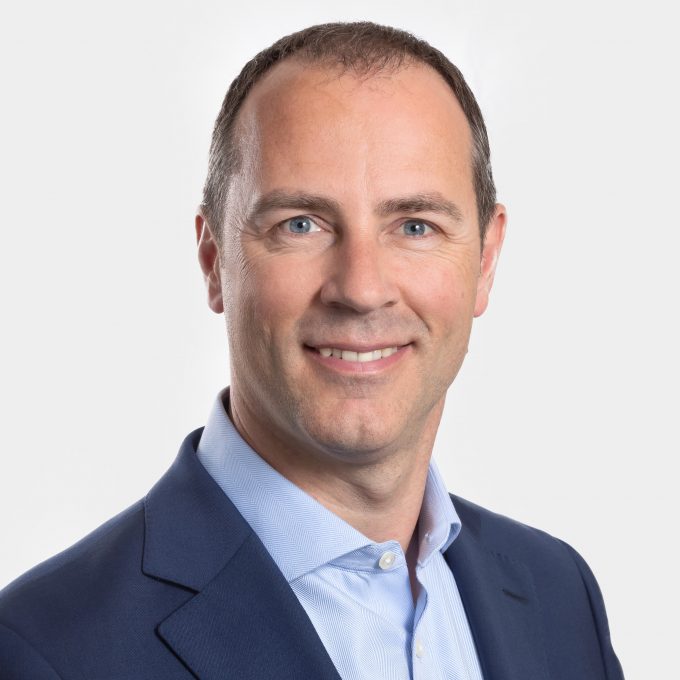With a heavy legal burden on trustees to act responsibility in the best interests of all current and future beneficiaries, Guernsey Director, Phil Radford, explores how prudent trustees mitigate risk.
There are few professions where a service provider has a responsibility not only to their client, but to future generations who do not yet exist. Imagine a chef is given ingredients by a family and asked to make a meal, which the family then enjoys. The idea that the family’s heirs would approach the chef two decades later to raise a grievance that they would have preferred a different meal with those ingredients, and feel they should be compensated for the decision, would be unfathomable.
When it comes to the responsibilities of a trustee however, a version of this scenario is entirely possible. A trustee has a responsibility to act in the best interest of all beneficiaries of a structure, which includes the future generations of a family. Every single decision a trustee makes is a balancing act between the benefits to the current generation and the risk of the potential impact on the next.
One of the most significant risks is that future generations will have the benefit of hindsight over decisions made today, a luxury which is not afforded to the trustee when making the decision.
For example, a financial investment may be made which appears to be a reasonable option at the time but which may subsequently fail to meet expectations. Similarly, an investment opportunity may be turned down if deemed to be too high risk, with it later transpiring that the investment would have given a high return. A trustee can only make decisions based on what is sensible and prudent on balance of the information available at the time, whereas a future beneficiary is able to scrutinise choices after knowing the outcome.
Jack of all trades
It is important for clients to understand that a trustee is a generalist and not a specialist. While most people will be aware of the adage “a jack of all trades is a master of none”, which is commonly used as a criticism, the full quote is lesser known:
“A jack of all trades is a master of none, but oftentimes better than a master of one.”
The quote was intended as a compliment to those who could be useful in a vast array of circumstances. At Saffery Trust, an essential part of delivering client service excellence is facilitating connections between our clients and our global network of specialist advisors. We have spent decades cultivating a network of service providers who are at the forefront of their professions and who support us in our responsibility to preserve and enhance our clients’ assets.
While the delegation of specialist areas to specialists offers a certain level of protection to us as trustees of the assets, we also have a responsibility to monitor those third-party service providers and set sensible parameters for them to act within.
Our Guernsey trustees also have a unique legal obligation in this regard to act “en bon père de famille”, or as the “good father” of the trust, acting with due care and in the utmost good faith. From lawyers and investment managers to cryptocurrency custodians and yacht managers, by continually monitoring the skills and good governance of specialists within our network, we act with the highest levels of diligence to help protect our clients’ assets.
Preserve and enhance
Amongst our responsibilities as prudent trustees, we have an obligation to both preserve and enhance the value of assets in a structure. These can be conflicting requirements, as often enhancing value requires investment, which inevitably risks the preservation of the existing wealth. The preservation of the real value of assets can also require investment, for example in today’s economic climate where inflation will devalue assets that are not held appropriately. Getting the balance wrong between these two responsibilities could leave a trustee open to complaints and legal actions being levied against them by current or future generations of beneficiaries.
We consider potential future risks in everything we do every day. It is undoubtedly true that you cannot please everyone all the time, and often what is ‘right’ or ‘wrong’ is subjective.
An advantage of Saffery Trust’s independent structure is that we have complete autonomy to consider any asset class for our clients. Where other firms may shy away from assets including digital assets and non-standard assets – for example arts, antiquities, and aircraft – we will consider any asset, while taking many things into consideration, including risk. This has resulted in experience across a far-reaching spectrum and, when decision needs to be made, we have a wealth of first-hand experience to guide us in our decision making.
Court directions and blessings
There are instances where a decision relating to the assets of a trust – whether it be the management or distribution of those assets – are significantly complex or have the potential to be particularly contentious in the future.
In these circumstances, trustees have the option to approach the relevant court in the given jurisdiction to ask either for directions or a blessing; both of which result in removing the possibility for the decision to be scrutinised in the future.
To ask a court for direction provides the strongest possible protection for a trustee. All parties with an interest in the outcome of the decision will be heard by the court, which includes legal representation for any unborn future beneficiaries. The court will then make an impartial decision.
It is rare that a trustee would ask the court for directions, it is more common – although still infrequent – that a trustee will make a pre-emptive application to the court for a blessing of a decision that the trustee has reached, but which is likely to be contentious.
Saffery Trust’s Guernsey and Cayman Director, Lisa Vizia, successfully received a blessing from The Grand Court of the Cayman Islands for a momentous decision to distribute the assets of a trust to a small number of the discretionary beneficial class, who were the Shari’a heirs of the deceased Settlor.
In granting the blessing, the Judge commented that Lisa and the Saffery Trust team had “arrived not simply at a rational decision, but one which follows very careful deliberation and inquiry… an approach which may be described as a “textbook” approach”. Macfarlanes Partner, Charles Gothard, went further to say the case could be “better seen as an example of a trustee looking beyond the textbook”.
The commendation of the decision we arrived at prior to requesting the blessing is a testament to our extensive expertise as conscientious trustees acting in the best interests of current and future generations.
Jurisprudence
If a trustee were to seek the blessing of the courts on frequent occasions it would not only be an unnecessary depletion of trust’s assets through a costly court process but would also likely be rejected by the court under the rationale that most decisions fall under the existing responsibilities of the trustee, with a blessing only being necessary in exceptional circumstances.
The law sets a high burden of prudence and integrity on trustees, but with that comes a high level of protection against claims made on decisions retrospectively.
Each time a case is heard, the court’s decision helps contribute to that jurisdiction’s jurisprudence, which is considered to be the “philosophy of law”. The concept of jurisprudence, in general terms, gives an indication of what a court’s ruling may be in cases where strong and consistent legal precedents have been set.
Where a trustee can demonstrate that they have made sensible, well-documented decisions that follow a thread of common sense, they will most likely be protected from any claims made against those decisions. As regulated trustees within jurisdictions with a wealth of tried and tested legal precedents, operating with prudence in jurisdictions with strong jurisprudence gives us confidence in our decisions.
Sham trusts
When a trust is established, it needs to meet the three certainties. There needs to be a subject (asset), object (beneficiary or purpose) and a clear intention from the Settlor – the individual putting assets into the trust – to relinquish ownership and control of the asset(s) to the trustee. A substantial risk for trustees would be in a case where the Settlor lacked this intention and the trustee allowed the Settlor to retain control, and effective ownership of those assets. The trust in this scenario would be labelled a ‘sham’ trust.
A prevalent case which demonstrated this risk – and brought trust structures under public scrutiny – involved five discretionary New Zealand trusts with a Russian businessman as the Settlor. New Zealand’s High Court ruled that at all material times, the Settlor “regarded the assets in these trusts as belonging to him and intended to retain ultimate control” and regarded the structures as shams.
As responsible trustees with over four decades of experience in establishing and administering trust structures, we understand the importance of building strong relationships with our clients and fully understanding their intentions and objectives. This allows us to tailor our services to create the most appropriate structures to meet their needs and build trusting relationships to ensure our clients are confident in our ability to take ownership and control of their assets.
There are, however, some instances where taking control of an asset would be inappropriate. For example, in a case where a family wants to establish a trust to hold a family business which manufactures a specialist product. Where the family has been successfully and actively managing the business for decades, it would not be sensible for us as trustees – with no experience of the product – to take over the running of the business.
In this instance, we would be able to restrict or limit our duty to intervene in the affairs of the underlying company via an ‘Anti-Bartlett clause’ in the , which is a provision which sets out and limits trustee duties to “interfere” in trust assets held. An Anti-Bartlett clause protects both us (by limiting our responsibility) and our clients’ business (by allowing them to retain responsibility for the operation of the business).
Other protections
Alongside the legal protections offered by the courts, trustees also have other safeguarding options available to help guide their decision making. Above all, the wishes of the Settlor – while not binding – are given high consideration. In the case where the Settlor is deceased, or perhaps no longer of sound mind, the trustee may be guided by a Letter of Wishes written by the Settlor, usually on the establishment of the trust, and can be updated through the life of the trust.
The trustee may also wish to seek the advice of a “Protector”, who is a party who fully understands the family and the wishes of the Settlor, but who will not benefit from the assets of the trust in any way and so can provide an impartial view about what the Settlor would have wanted. A Settlor’s view is persuasive, but not final.
Conclusion
As trustees, although we are responsible for assets, we are dealing with people. As such, circumstances, viewpoints and emotions continually change; what is right and fair shifts not only from family to family, but from family member to family member. ‘Fairness’ for one individual may mean complete parity, and for others fairness may be based on circumstance and need.
By understanding that people change, and a family’s objectives will evolve with each generation, we are best placed to ensure we are continually meeting our clients’ needs and acting in the best interests of all beneficiaries.
As ‘prevention is better than cure’ in medicine and the ‘best offence is a good defence’ in sport, when it comes to trust, foresight is the best protection against the benefit of hindsight.










